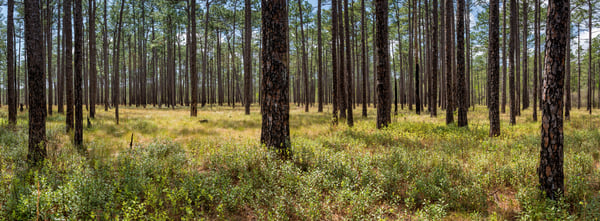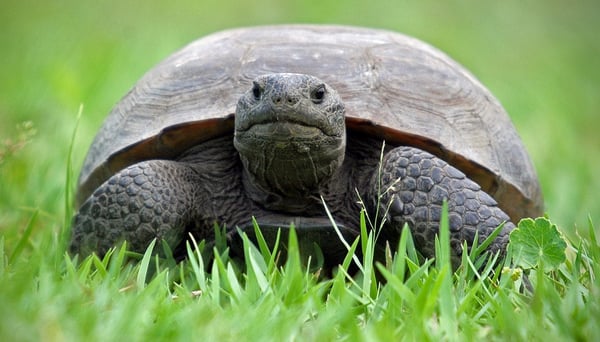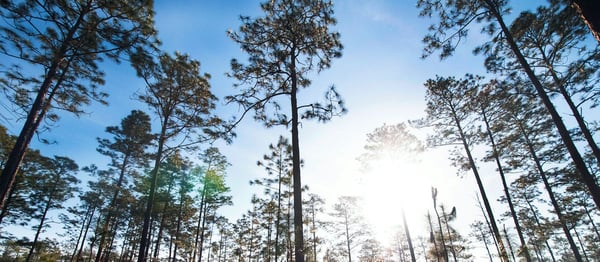Longleaf pines are beautiful trees, with sturdy, straight trunks that rise 100 feet or more in the air, and dark green, 18-inch-long needle-like leaves. Just 200 years ago, forests of these valuable trees covered more than 90 million acres in the southeastern United States, serving as home to a wide variety of wildlife and plant species. But decades of over-harvesting for timber and clearing for farmland wiped out more than 95% of this country’s longleaf acreage; by 2010, there were only about 3.4 million acres remaining.

The good news is there are several efforts now underway to preserve and restore the longleaf forests. If you’re a landowner in the Southeast, there are many good reasons to consider planting your acreage in longleaf, and many resources that will help you be successful in growing and harvesting them.
America's Longleaf Restoration Initiative, for example, is a collaborative effort of multiple private and public-sector partners that are supporting efforts to restore and conserve longleaf pine ecosystems. In 2019 alone the many partner organizations contributed to 1.7 million acres of accomplishments, including land protection, new longleaf acre establishment, conversion via silviculture, prescribed burning, and other maintenance actions. Click here to contact your local implementation team and get involved in restoration efforts in your area.
Why Plant Longleaf?
Longleaf pines are known by several different names, including longstraw, yellow, southern yellow, swamp, hard or heart, and pitch. No matter what they’re called, the trees are prized for many reasons.
Longleaf lumber was a favorite of shipbuilders in the past, and today its timber is used most often for building construction (joists, roof trusses, subflooring and sheathing) and for utility poles. Longleaf needles make an attractive mulch, and its resin is used in the production of ship stores like gum turpentine and rosins.
Longleaf pine trees have deep roots, so they can withstand the winds of hurricanes and tropical storms better than other pine species like Loblolly. That’s an important consideration today, when climate change is bringing more frequent and more severe storms to the Southeast. When trees are destroyed or have to be harvested prematurely, the landowner takes a financial hit. That’s less likely to happen with longleaf.

One of the most important benefits of well-managed longleaf forests is the diversity of wildlife and plant life that they support. They’re home to more than 30 animals on the endangered or threatened list, including gopher tortoises, red-cockaded woodpeckers, and indigo snakes. You can see more than 68 species of birds among the longleaf, including the bobwhite quail, wild turkeys and brown thrashers. Species of reptiles and amphibians that aren’t found in other ecosystems live in longleaf forests, and the plant life is amazing. There are more than 900 plant species that grow in these woods and nowhere else!
Growing and Protecting Longleaf
You may have heard that longleaf are slow to start and hard to grow. While they may require a little more TLC than some other pine trees, they will thrive if you carefully prepare your planting site and manage them as they grow.
Here’s a quick look at the basics of longleaf growing.
- Check the Soil. Longleaf do well in a variety of soils, from well-drained sands to poorly-drained clays. Cutover forest land works well for these pines. If you want to convert a farm field to a longleaf forest, however, you’ll need to scalp the land (peel it back in a wide furrow) and then rip it to fracture any hardpan.
- Choose your seedlings. Although there are methods that forest owners can use to encourage the growth of longleaf from seeds, this can take several years. To give the process a jumpstart, most landowners plant seedlings. Bareroot seedlings are less expensive than containerized seedlings, can be handled in bulk, and tolerate deep planting. However, because of their exposed roots, they’re more easily stressed, have a shorter viable planting time and a lower survival rate. Containerized seedlings have intact roots and tend to survive better than bareroots plants. They store longer and move more quickly through the grass stage when planted. However, they are more expensive to purchase and don’t tolerate deep planting as well.
- Bring on the sunshine. Longleaf pines need lots of sun, so they do best in less dense woods where sunlight can reach the forest floor.

- Determine the right density. To create the most welcoming environment for wildlife, plan on about 400 to 500 trees per acre. To realize more income from a longleaf forest, the UDSA Natural Resources Conservation Service suggests planting 500 to 900 trees per acre.
- Reduce the Competition. To ensure that longleaf get the sun exposure they need, controlling competing vegetation like bermudagrass and other hardwood species is important. For seedlings less than a year old, herbicides are the best bet. After that, controlled burns (see below), thinning, and shelterwood harvesting—removing some mature trees while leaving others to shelter seedlings or produce seeds—are good methods of control.
- Burn Wisely. Controlled/prescribed burns every few years are essential for managing longleaf pine forests. Longleaf need fire to take root and to establish themselves at the seed stage, and to limit competition as they grow. Controlled burns also help create the right habitat for plants and for animals. Consult with a professional forester about the right time for burning and about the permits you’ll need to obtain to conduct them.
- Enjoy the harvest. Longleaf may take a few years longer than loblolly to reach the optimal harvesting height, but the extra time pays off in the higher returns that forest owners receive for the highly-prized longleaf timber.
Longleaf Resources for Landowners
Longleaf forests grow throughout the Southeast, from Virginia to Florida south, and west to Texas. If you’d like more information on getting started, there are several sources of information.
Residents of Alabama, Florida and South Carolina are in luck. WoodsCamp (a free online tool provided to landowners by the American Forest Foundation,) can connect them to resources designed to protect and restore longleaf.

Simply go to the WoodsCamp.com, find your property on your state’s map, and answer a few questions about your goals for your land. If our mapping data indicates that you might be eligible for a local longleaf program, that will appear on your free woodland report, along with next steps for learning more about the opportunity. Depending on where your land is located, that might include a free forester visit, a free landscape management plan, and financial assistance for planting and/or managing longleaf woodlands.
To find out if WoodsCamp is live in your state, and what your land might qualify for, click below to find your property on our map.
If you’re in a state that’s not yet part of WoodsCamp, or if you’re interested in learning more about the overall plans to bring back longleaf forests, The Longleaf Alliance is a great resource. You can find educational materials about longleaf, updates on ALRI’s accomplishments and goals, and contacts for local implementation teams currently working on longleaf projects in different states.
My Land Plan, another tool provided by AFF, also has an extensive section on longleaf pine forests.
Finally, you’ll find information about the financial aspects of growing longleaf in The Economics of Longleaf Pine Management, a joint publication from ALRI and several state forestry services.
The more you read about longleaf pine, the more you will understand the value of preserving these beautiful, valuable trees and the habitats that they provide for future generations.
*This post was written by Mary Lou Jay, a regular contributor to WoodsCamp blog and AFF's WoodLand Magazine.



We want to hear from you.